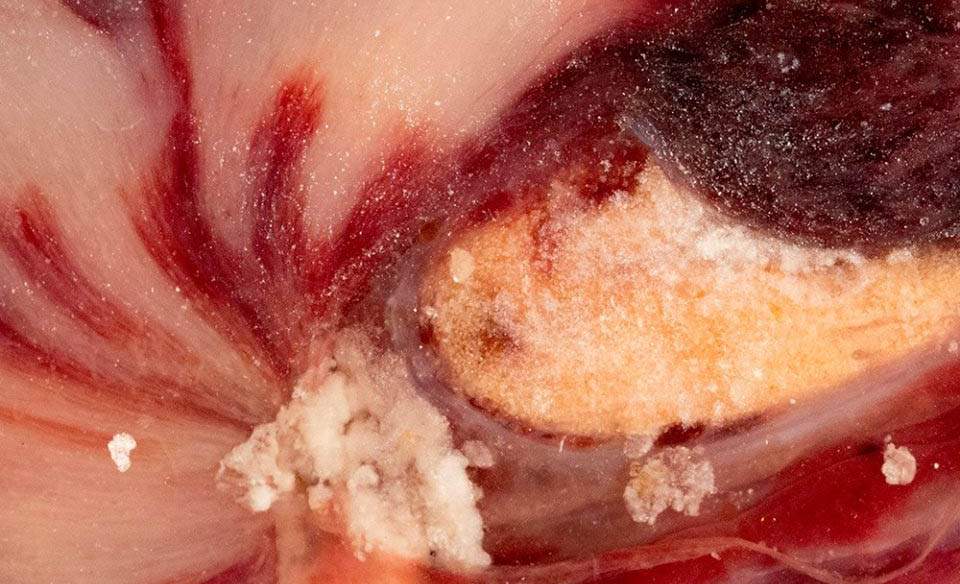John A. Douglas: The Visceral Garden – Landscape and Specimen
The mechanics and malfunctions of the human body rendered in surreal landscapes.
Overview
Upon first glance, the above macro photograph from John A. Douglas's current exhibition looks quite appetising delectable, even. Like berry ripple ice-cream or a custardy mess of trifle. However, the title, Renal, is sure to dry up that excess saliva in a heartbeat.
Burrowing deep under the skin, The Visceral Garden: Landscape & Specimen is a photographic essay visualising the swirling, psychedelic galaxies of the human body, or more specifically, the diseased body. To kickstart your 2014 in culture, this exhibition at Chalk Horse is a must. They've set up a new space on William Street, giving the Cross a boost of contemporary art.
As an artist and chronically ill patient, Douglas has cultivated an interest in morbid anatomy over the past years. During his residency at the Museum of Human Diseases at the University of New South Wales, he studied the aesthetic character of his illnesses and other pathologies, photographing tissue specimens that mirrored his own ailments. Woven with Greco-Roman motifs, the resulting series is a cathartic and visceral narrative, depicting an overwhelmingly vast and complex bodily interior.
Throughout the series, the small figure of Douglas, clad in either red or gold, represents the struggle to stave off disease. Whether it be crawling frantically through manhole-sized blood vessels or lying limp in a field of luminous bones jutting up like tombstones, he continually appears dominated by formidable and surreal landscapes.
Notably, The Visceral Garden - Styx has the apocalyptic feel of a Greek epic. Unlike the extraterrestrial deserts of other works, this environment is angular and fierce, featuring jagged 'rocks' and 'clouds' burgeoning with grey-green toxicity. The expressive gesture of the miniature red man reaching towards a tangle of indistinct angels has a definite air of classicism, evoking Michelangelo's Creation of Adam. There's also a work portraying the same figure bound up in red web, held captive by the goddess Arachne.
The fact that Douglas stitches in these mythologies communicates the idea that he is not only traversing under skin, but through underworlds that are fraught with danger. You're drawn to contemplate the materiality and mortality of your own body. This is again reinforced by the images of isolated organs floating eerily in space, thinly veiled and with intricate, fleshy threads. With their spots, clots and discolourations, it would appear that seemingly minute damage can have big repercussions in this biological universe.
The Visceral Garden — Landscape and Specimen is a coalescing of beauty and morbidity. With the veiny textures and arresting colours of his macro photography, Douglas offers a fascinating fusion of anatomy and geology. The whole narrative is pulled together by the four-channel video, reflecting the biological and psychological struggle of blow by blow. One thing's for certain, 'visceral' is the right adjective.





